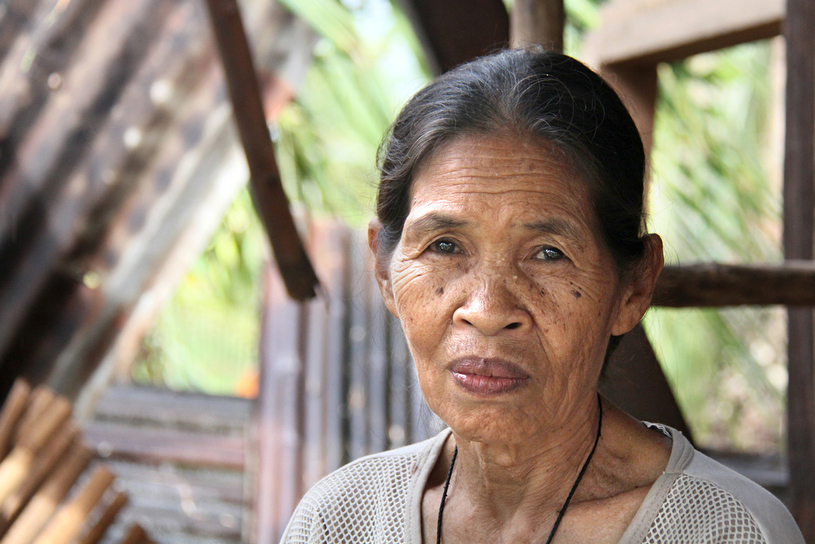
Concepcion Ondocan is coping with loss after so many of her friends and neighbours were killed in a mudslide that swept away 300 homes. Photo by Jen Hardy/CRS
By Jen Hardy, CRS Communications Officer
Lush trees dominate the landscape in the tropical Philippines. But in this mountainous section of Mindanao, brown, barren landscape now stretches into the distance.
The trees that stayed standing were stripped bare on 3 December, as Typhoon Bopha devastated areas of Compostela Valley and Davao Oriental. In many areas, every tree, stretching to the mountains in the distance, lies snapped on the ground.
Massive banana plantations have been flattened, leaving only traces of homes and other structures. Bananas sit rotting in the mud, and plantation labourers worry that with no bananas to harvest they’ve lost their incomes just as they’re grappling with so much other loss.
Fele Ondocan is thankful that her home in Andap barangay is only damaged, not totally destroyed.
“The roof and part of the frame blew away, but we found it nearby. We’re relieved, because we can’t afford to buy new materials,” she said. “We can fix the home. Our neighbours lost everything.”
Fele’s extended family, who live just behind her home, were not so lucky. A falling tree destroyed much of their house. They are staying in an evacuation centre.
Concepcion Ondocan fluctuates between bewilderment at how to move forward as a family, and trying to cope with losing so many of her friends and neighbors. They died when a mudslide – less than a football field away from the Ondocan house – crushed and swept away 300 homes.
“The tree crushed our home during the night, and we ran toward the community centre and church where many other people were gathered. We stayed there for a short time, and then left to go to another evacuation area where some family members were staying. Just after we left, the mud and boulders came, destroying the church and washing the centre away,” said neighbourhood leader Francisco Aldueso.
He shakes his head as he looks at the site where the centre stood. It had been surrounded by homes, small shops and gardens. All that remains are boulders and knee-deep mud.
“There are still more than 300 people missing from this place, and we know another 80 died,” he said. “So far, we’ve only found 41 survivors. Some of them were trapped in the mud for two days before they were rescued.”
The community centre was supposed to be safe, but Typhoon Bopha – which is called Pablo in the Philippines – shifted the riverbed nearly 1000 feet, steering the mud and stones straight into the houses. For the survivors of the mudslide, even pulling their scattered belongings from the sticky, deep mud is impossible.
It will take a long time to recover from such dramatic blows to infrastructure, incomes, families and homes.
Caritas Philippines working in partnership with Catholic Relief Services mobilised the day after Bopha roared through central Mindanao, and in this early emergency phase they are working to bring drinking water, hygiene items, plastic sheeting and sleeping mats to families in Compostela Valley.
Jen Hardy is CRS’ regional information officer for Asia. She is based in Phnom Penh, Cambodia, and is currently in the Philippines covering Typhoon Bopha. This post has been redited by Caritas Internationalis. To read the orginal post please visit CRS or follow her on twitter
